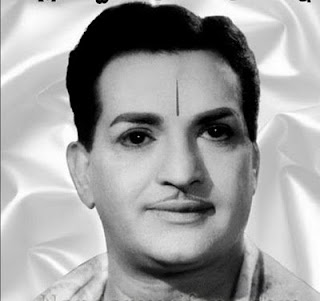This is our
season of despair. This year, it would seem, the gods have been most unkind to
Indian farmers. Early in the year came the weird weather events, like
hailstorms and freak and untimely rains that destroyed standing crops. Nobody
knew what was happening. After all, each year we witness a natural weather
phenomenon called the Western Disturbance, winds that emanate from the
Mediterranean and travel eastward towards India. What was new this year was the
sheer “freakiness” of these disturbances, which brought extreme rain with
unusual frequency and intensity. More importantly, instead of “breaking” over
the Himalayas, as these disturbances are prone to do, these winds with moisture
travelled eastward towards Bengal and even southward towards Madhya Pradesh.
Meteorologists were spooked.
And farmers,
watching their standing crops destroyed before their eyes, were caught off
guard. Their pain was palpable. My colleagues who went to understand what was
happening in rural Uttar Pradesh after these events came back with tales of
utter shock. Farmers were already caught in a spiral of debt because of the
increasing cost of agriculture and now this. It was nothing less than carnage.
But this was
only the beginning of the year, the first cropping season. Then came the
whopper of a drought season, linked to El Niño—warming of the Pacific that
gives the monsoon a fever. In many parts of the country, this would be the
second or third or even the fourth consecutive monsoon failure. It is a
terrible situation, with no water for crops, livestock or drinking in many
parts.
The question is:
will it end
soon, or is it a beginning, a glimpse of what the future looks like? The answer
to this question holds the difference between life and death, literally.
The fact is if
we dismiss this season of despair as a freak year, then we will never put into
place the corrections so desperately needed in a future that is even more risky
and makes us even more vulnerable. Meteorologists will tell you that the
weather is becoming more erratic, more confounding and definitely more
devastating. Even if they hesitate to use the word “climate”, they will agree
that something new is afoot. In other words, this is not just natural weather
variability, but portends long-term changes.
So what do we
do?
1. First, we need
to invest big time in weather sciences. This is where our future security lies.
Monsoon is our finance minister and it is not just capricious, but perhaps the
most globalised Indian. We need to invest in the science of monsoons and
weather forecasting. In the last budget, there was across-the-board cut in the
money allocated to all scientific ministries. This means institutions following
and learning the monsoon, like the Pune-based Indian Institute of Tropical
Meteorology, could see as much as a 25-30 per cent reduction in their annual
budget. This is short-sighted, if not downright foolish. We need to spend more,
not less, on this lifeline science.
2. Second, we need
to do much more to fix our agrarian crisis. It is clear that farmers are caught
in a double bind. On the one hand, costs of all inputs, particularly labour and
water, are increasing and on the other hand, there are controls on food prices.
Our food pricing policy is built on the premise that we are a poor country, so
consumers must be protected. But this means farmers—who are also consumers of
food—are not paid remunerative prices for their product. And all the big talk
about deregulation and ease of doing business never makes it to their fields.
They are restrained in where they can sell; prices are artificially “fixed”;
and when shortages grow, government rushes to buy from heavily subsidised
global farms. This cannot go on.
3. Third, we need
to plan for development knowing that weather will be more variable and more
extreme. This means doing all that we know has to be done. There is no rocket science here. Build water
and drainage infrastructure that can both hold water when there is excess rain
and recharge groundwater when rain fails. Again, in this budget, the government
has slashed investment in irrigation. We are not even using the optimal
potential of rural employment to build water security. We have just not
understood that in a climate-risked India, water has to be our obsession.
Infrastructure—everything from cities and roads to ports and dams—must be built
in a way that they are compliant with best environmental safeguards.
4. Fourth, knowing
that building resilience and adapting to these changes is not enough, we need
to vastly strengthen systems to compute farmers’ loss and pay for damage—
quickly and properly. At present, our so-called crop insurance schemes are
poorly designed and even more poorly executed. Once again, this cannot go on.
Let’s get our
heads out of the sand and smell the wind. Only then can we stop the killing
fields.




























